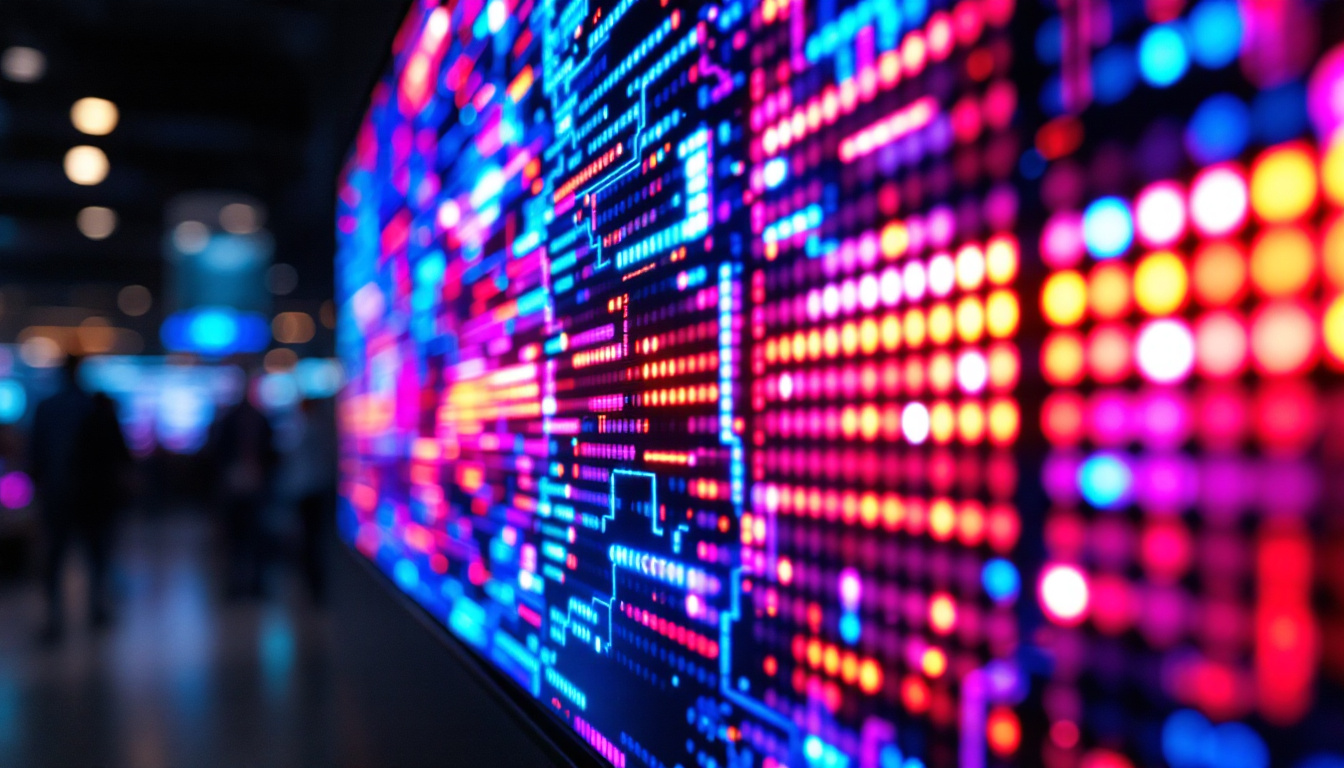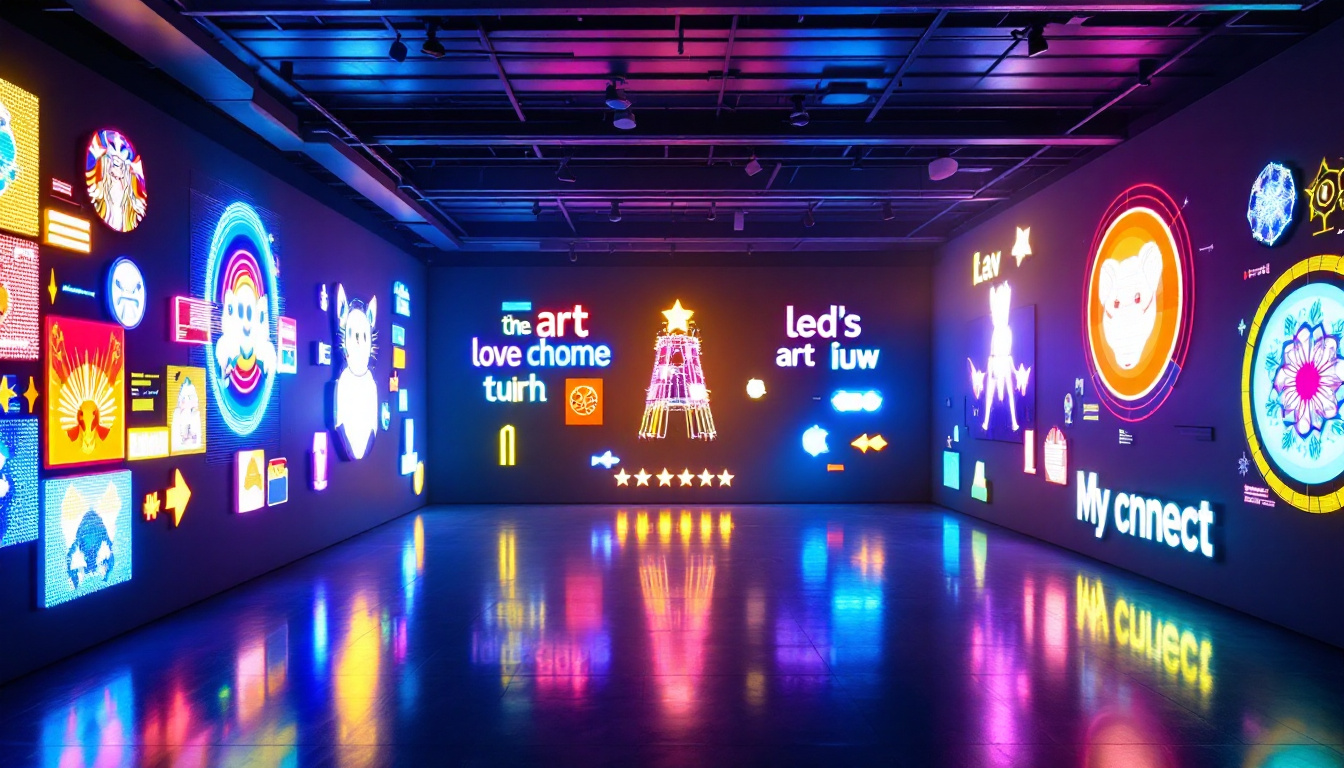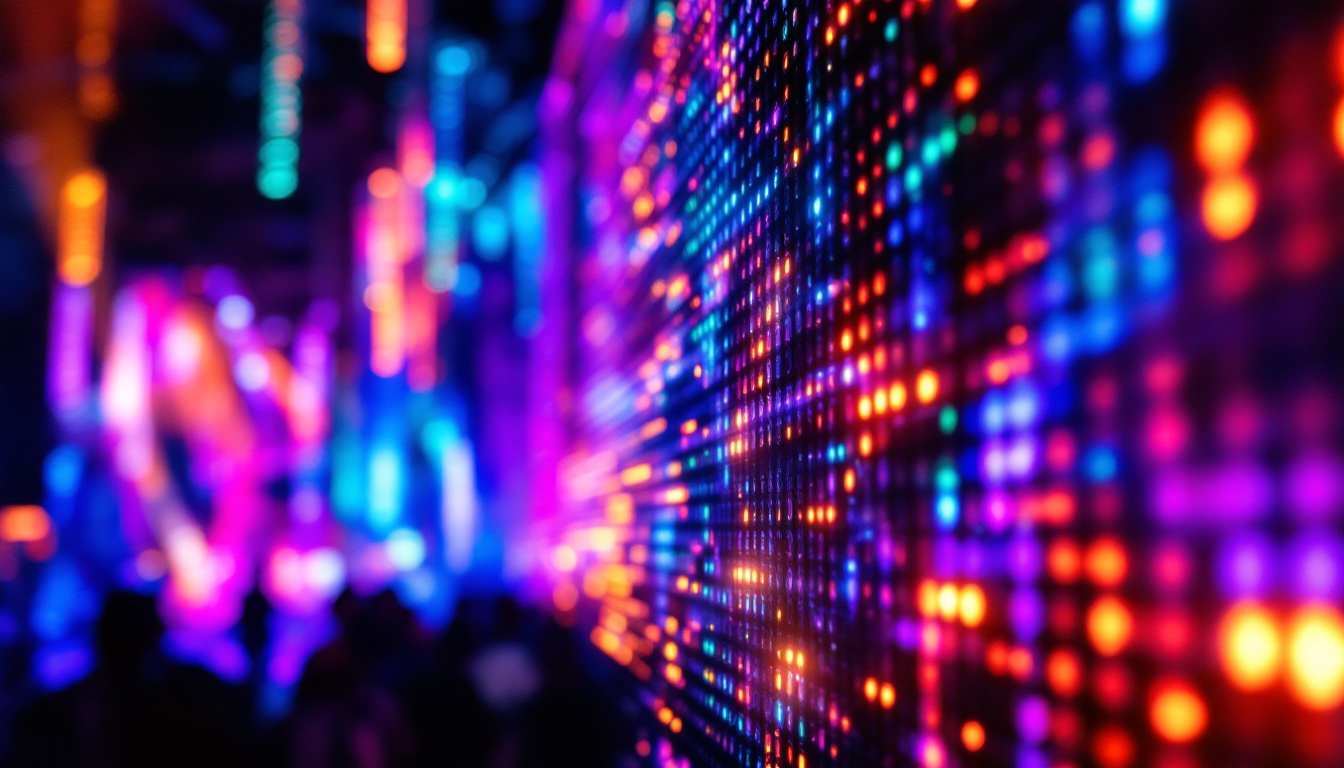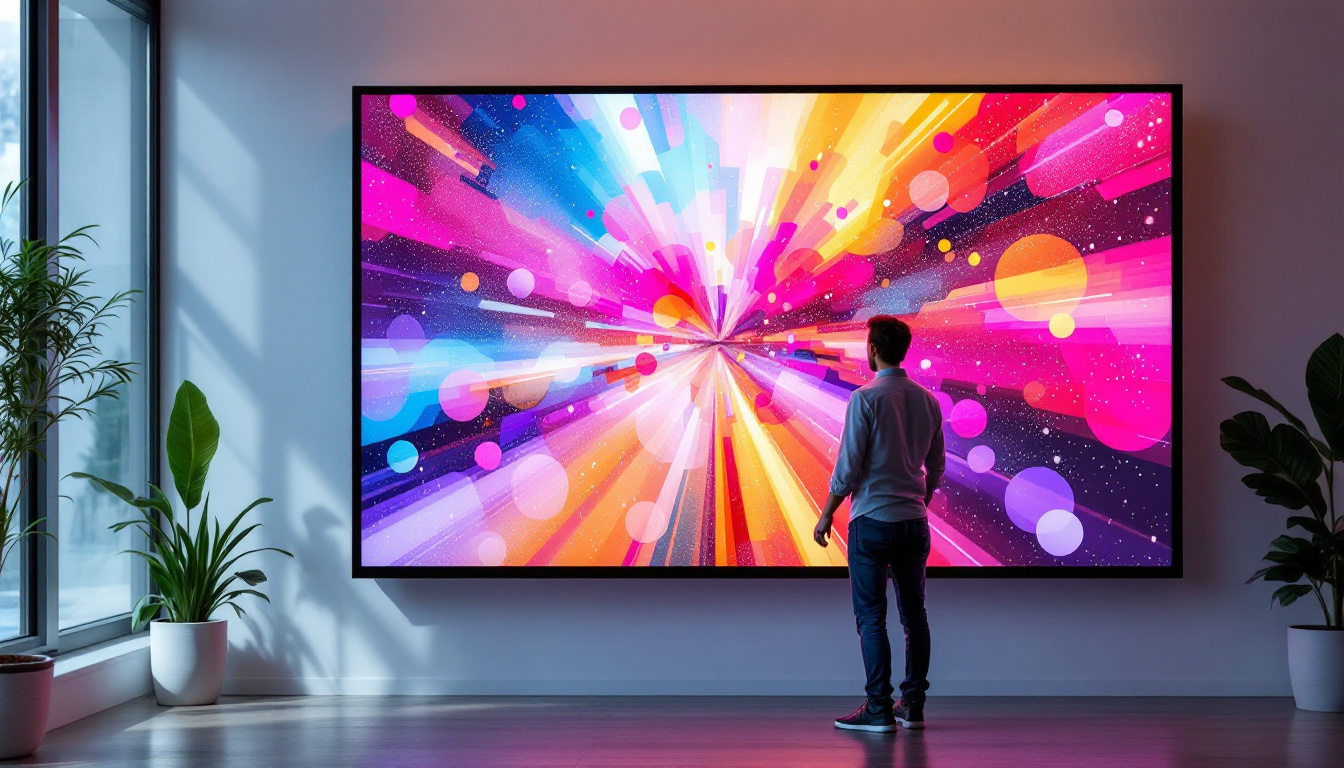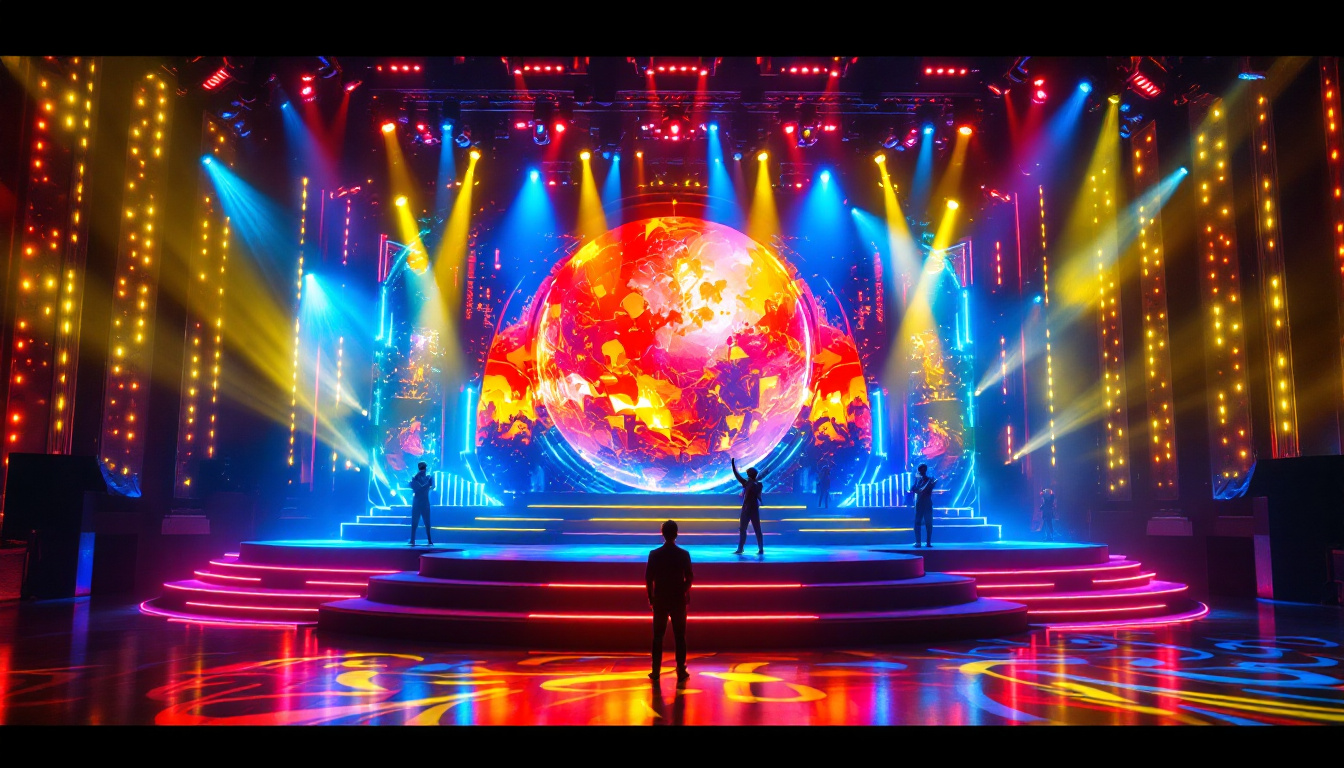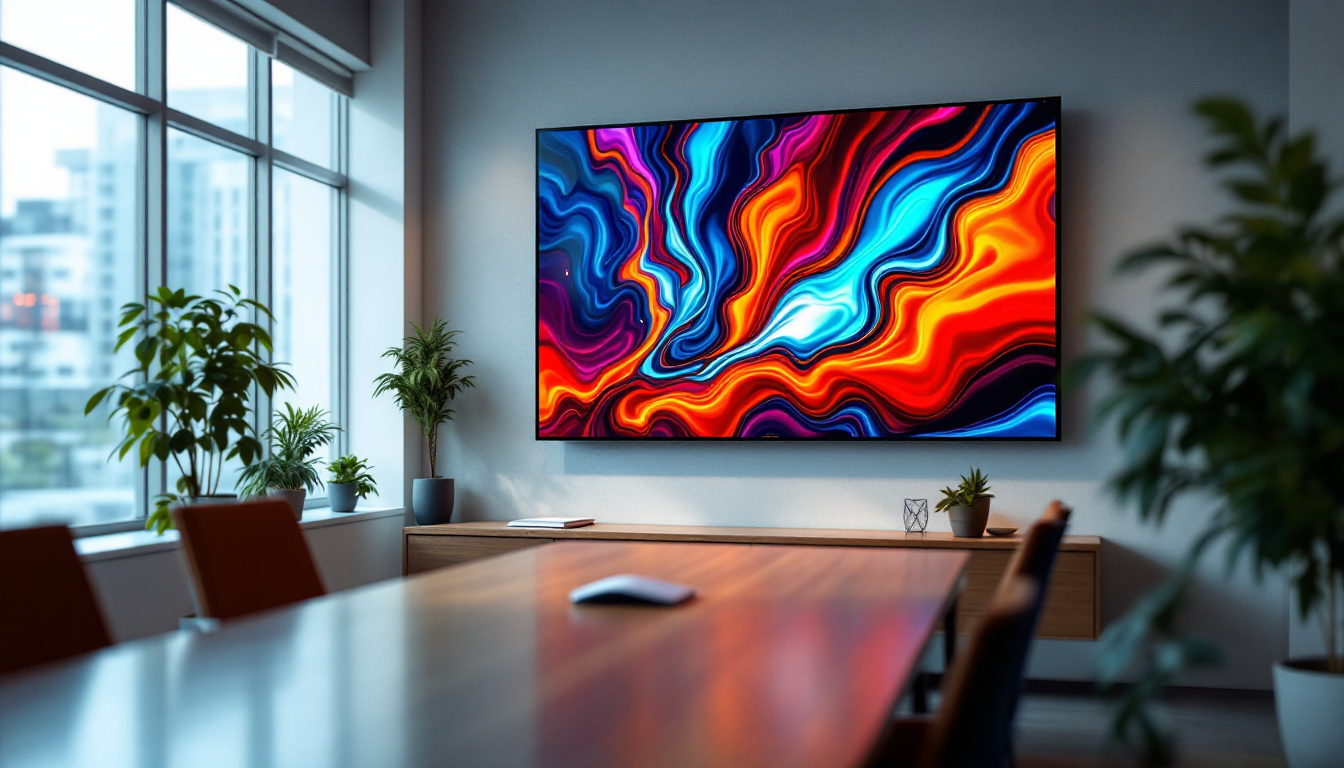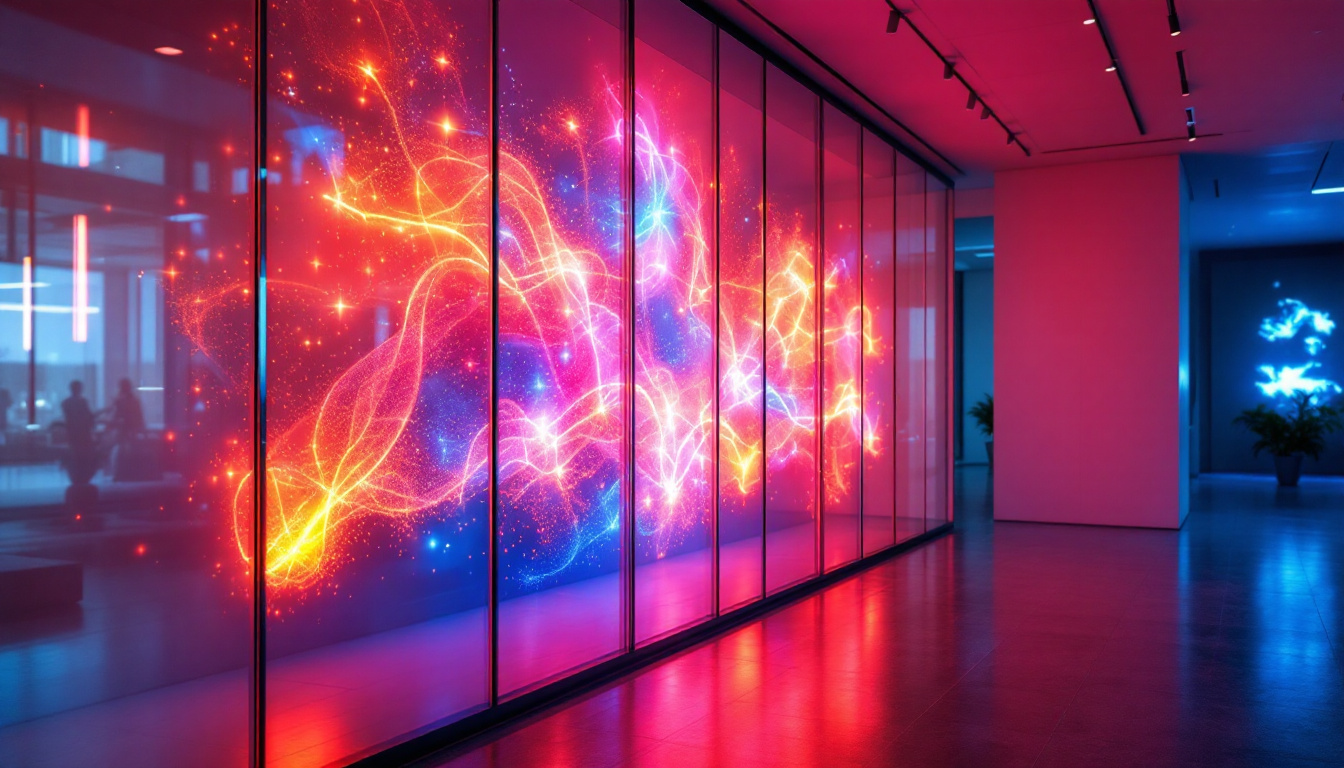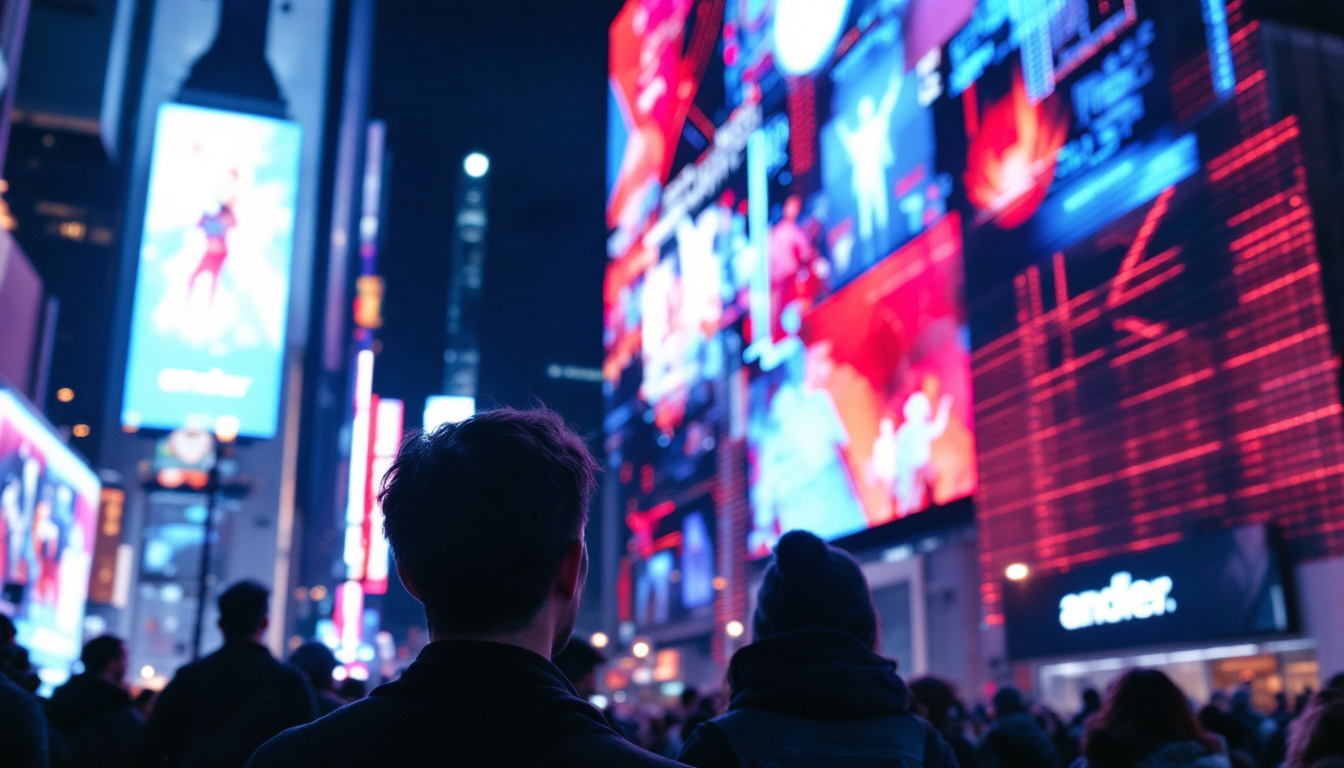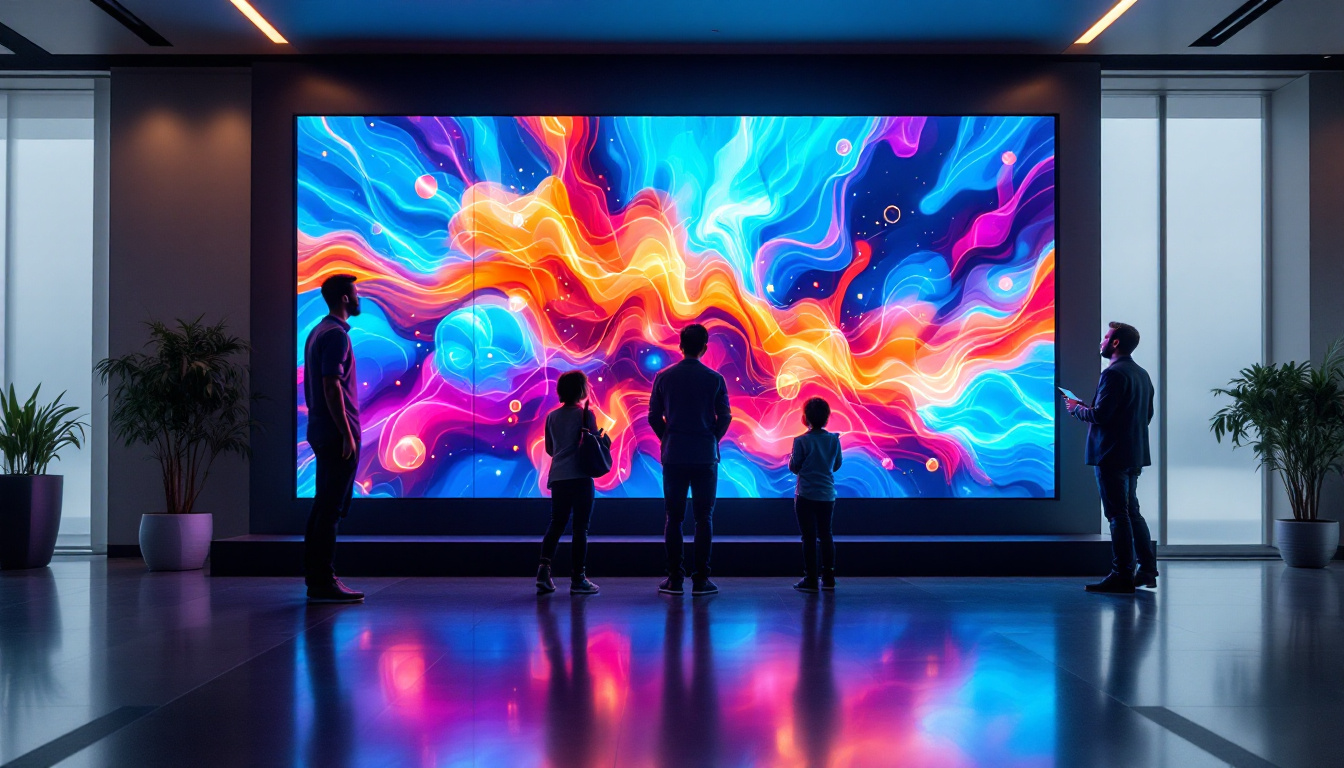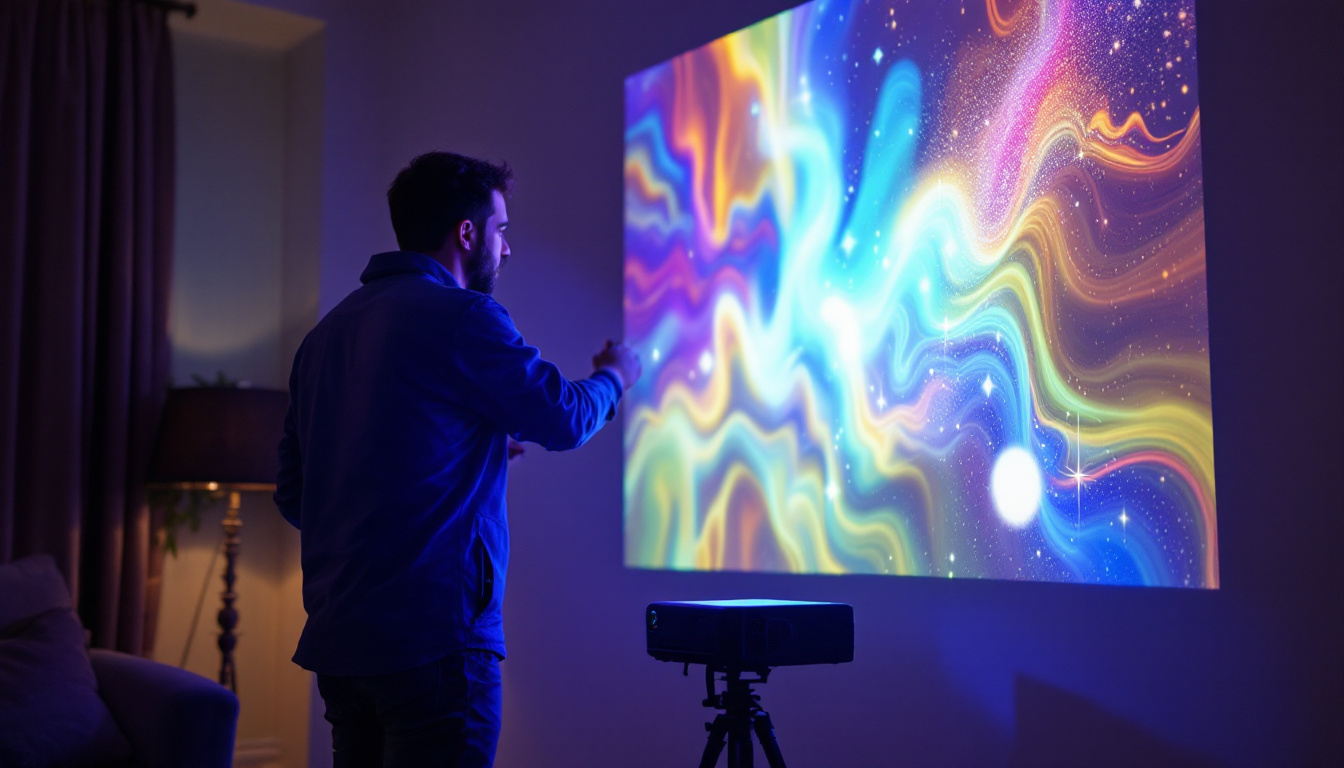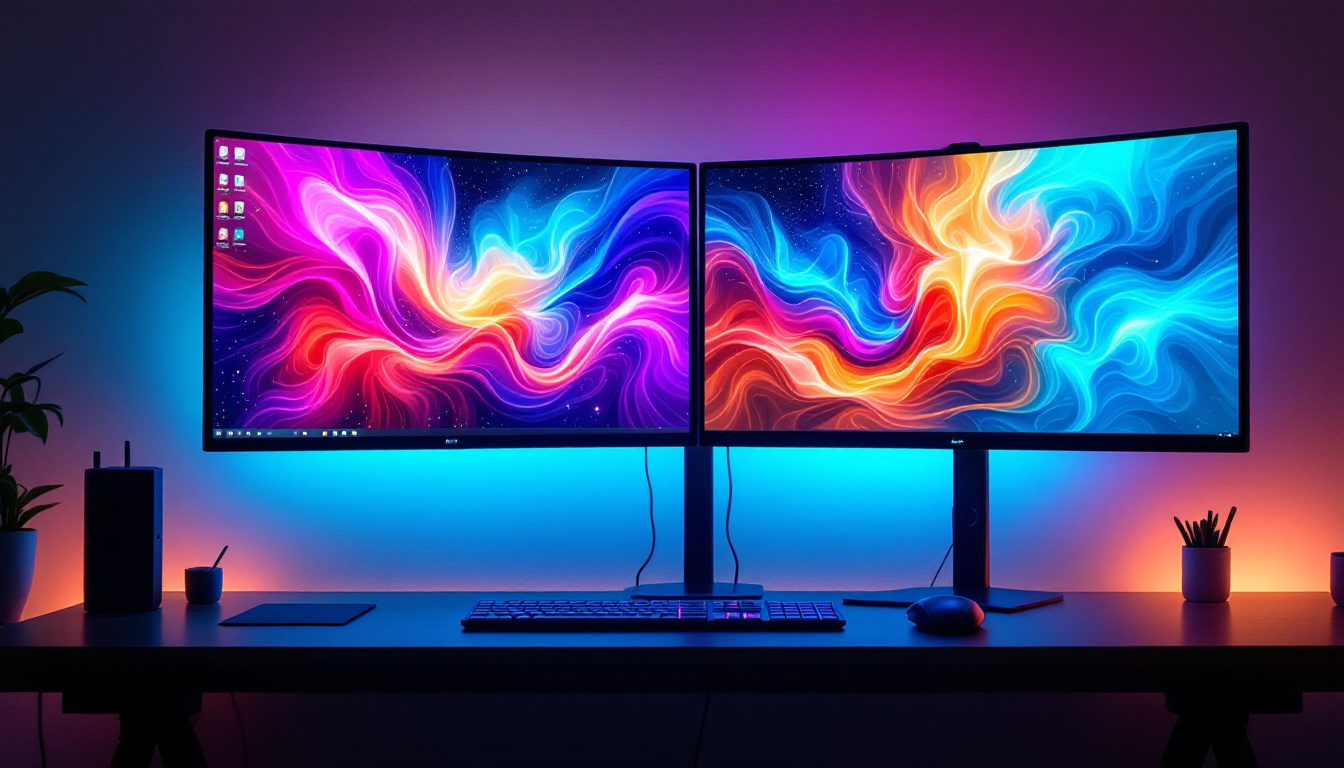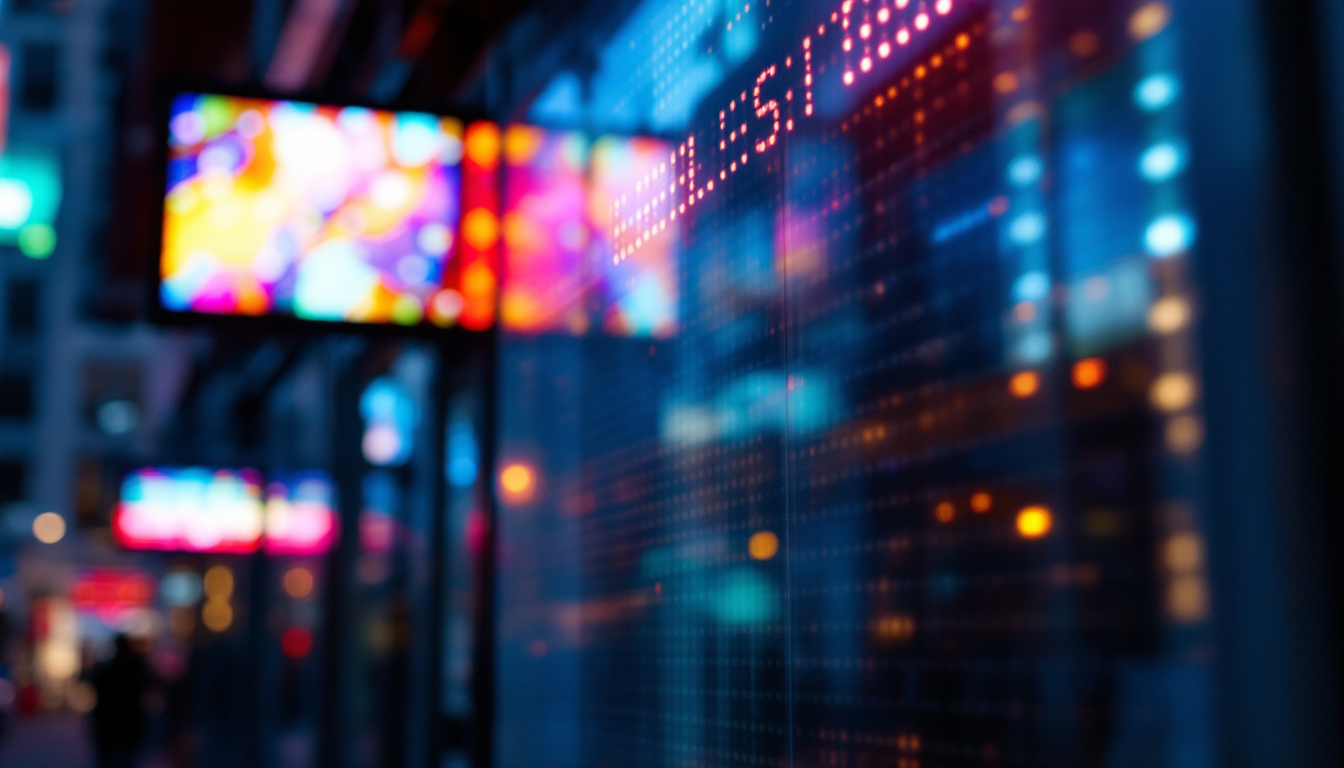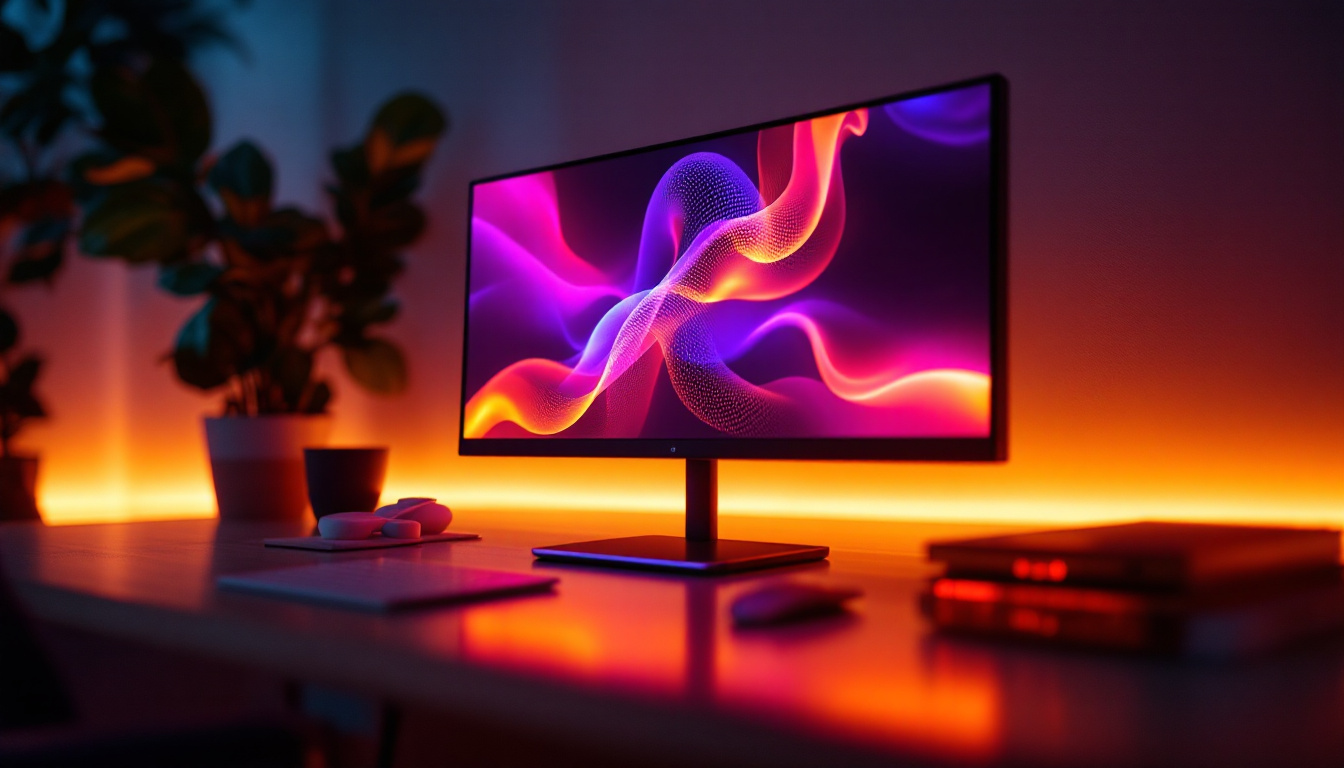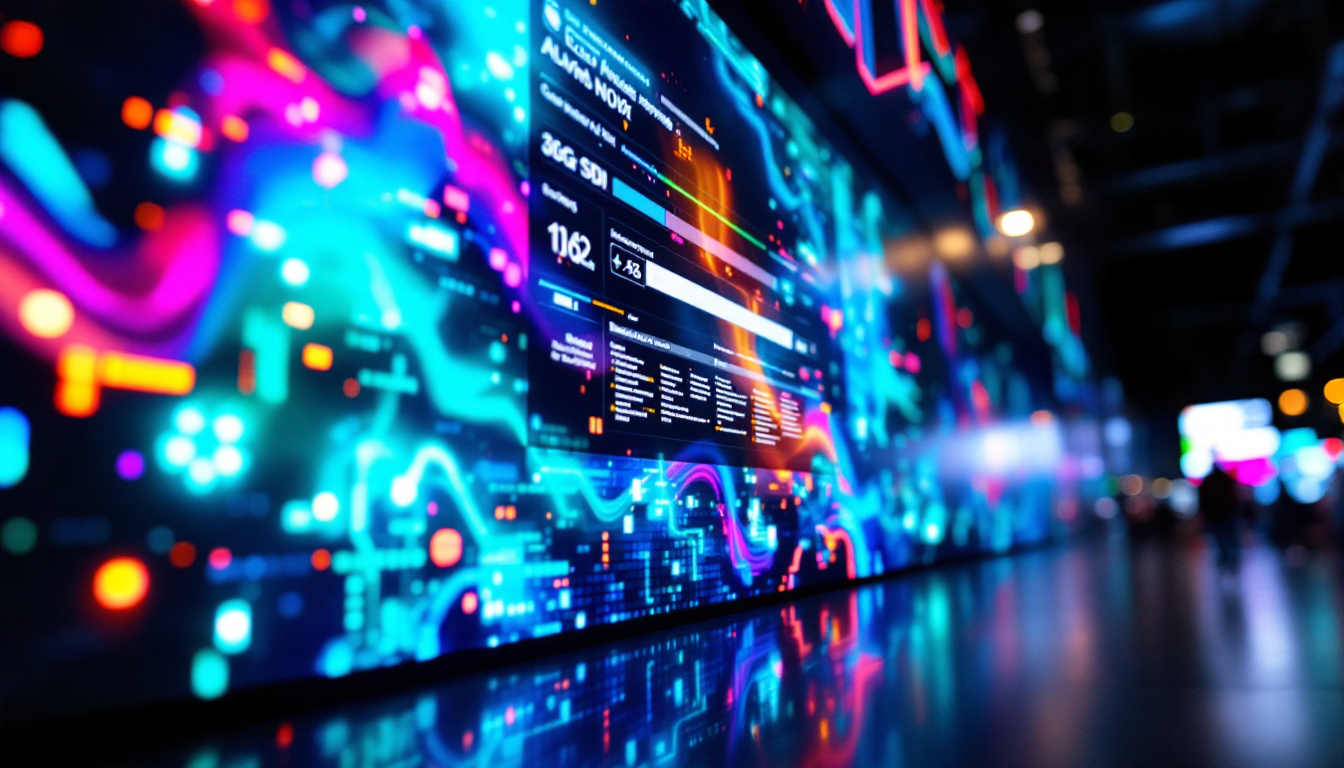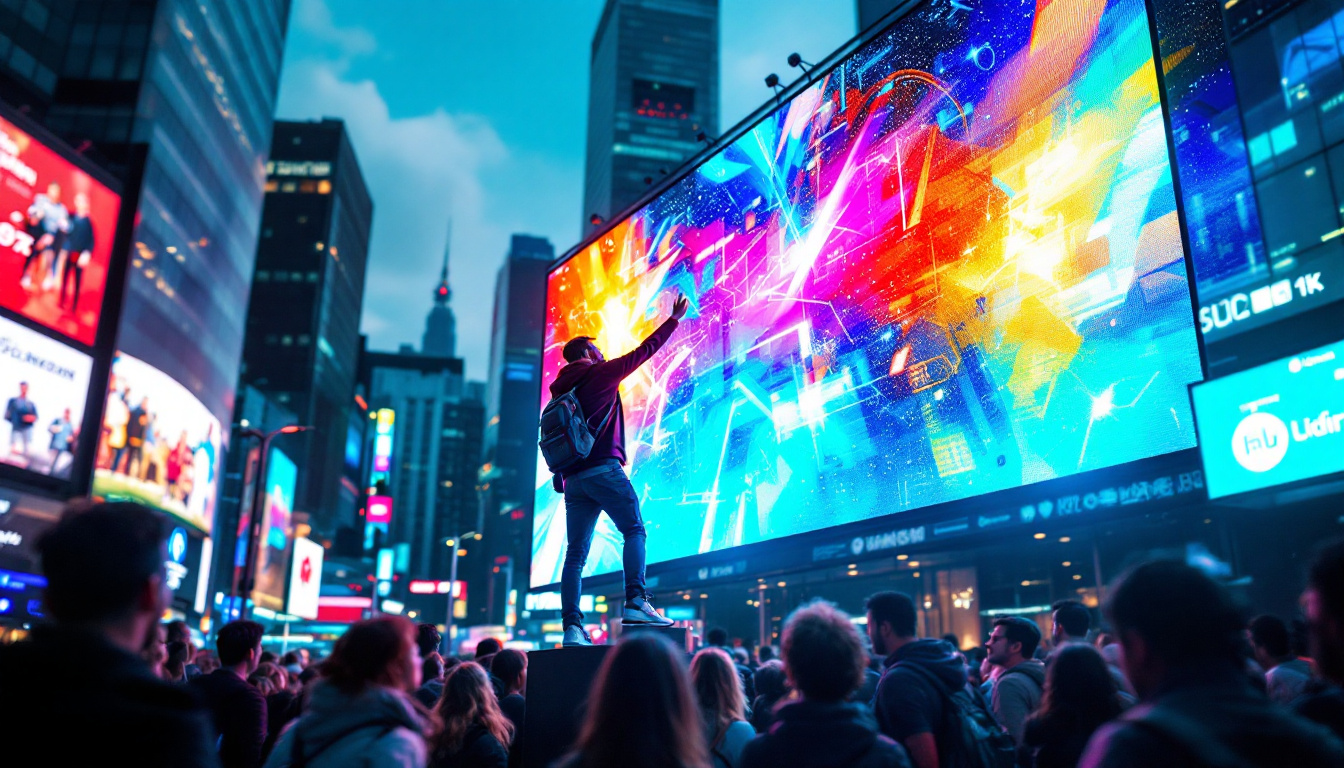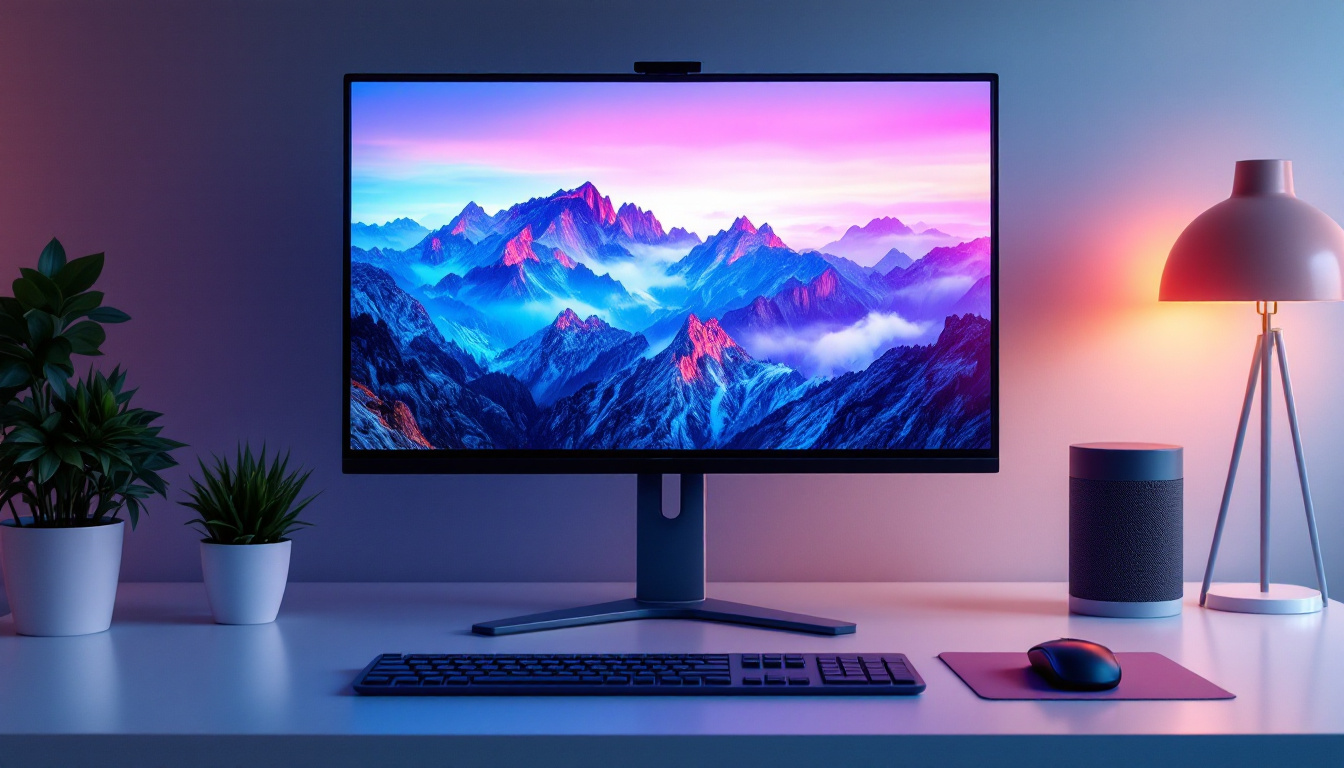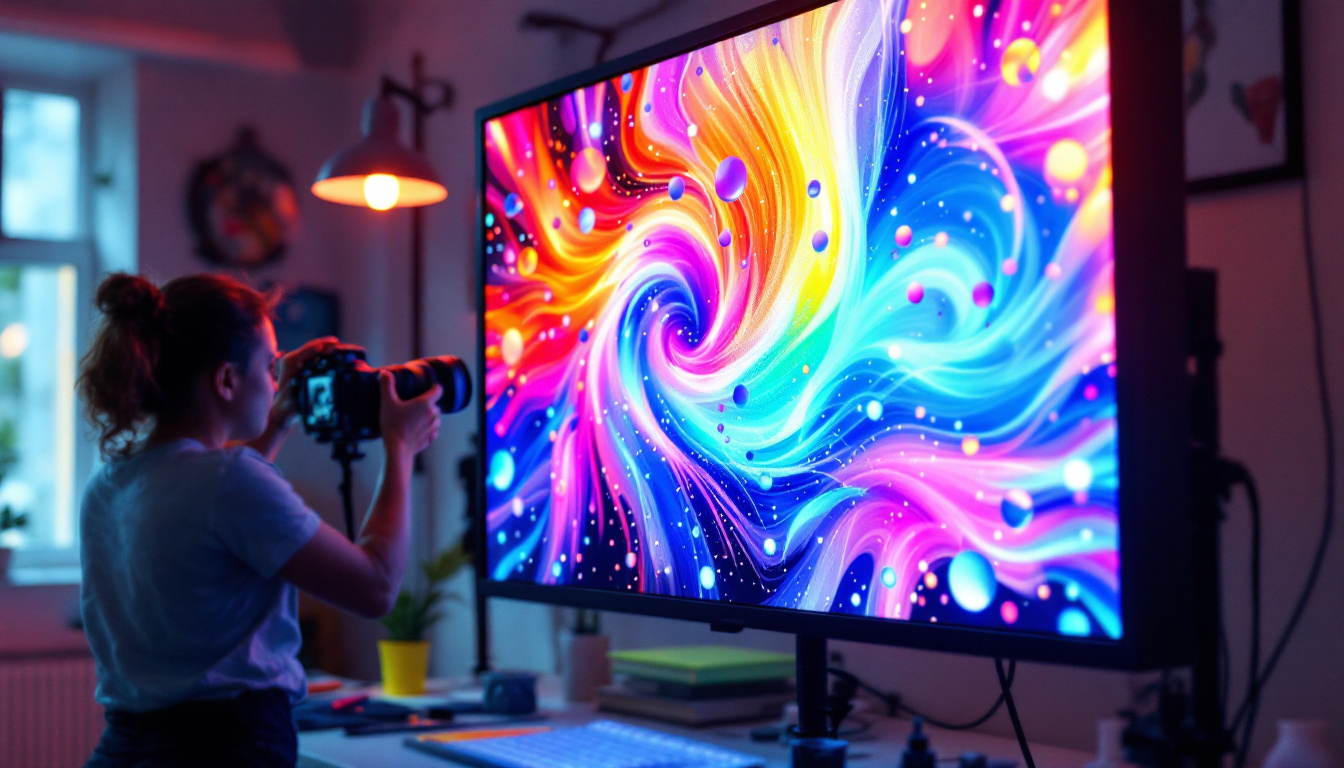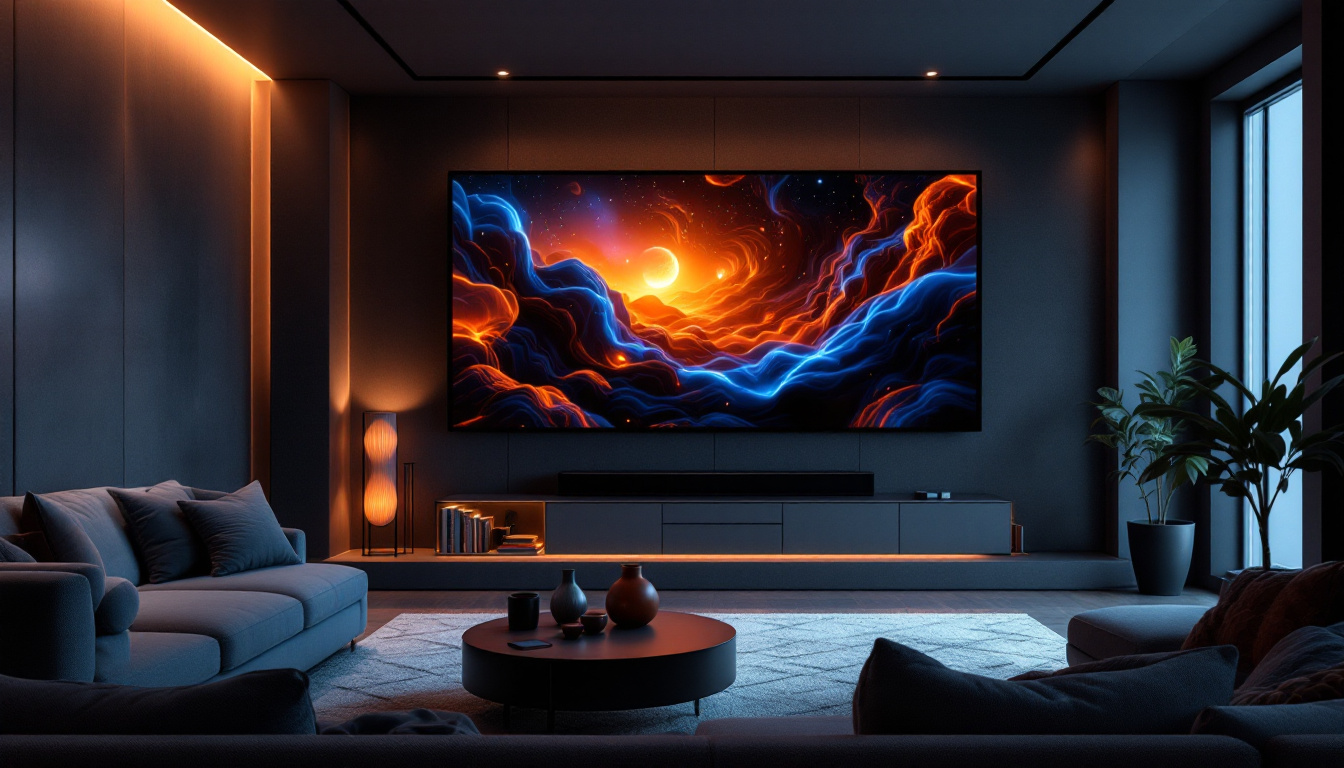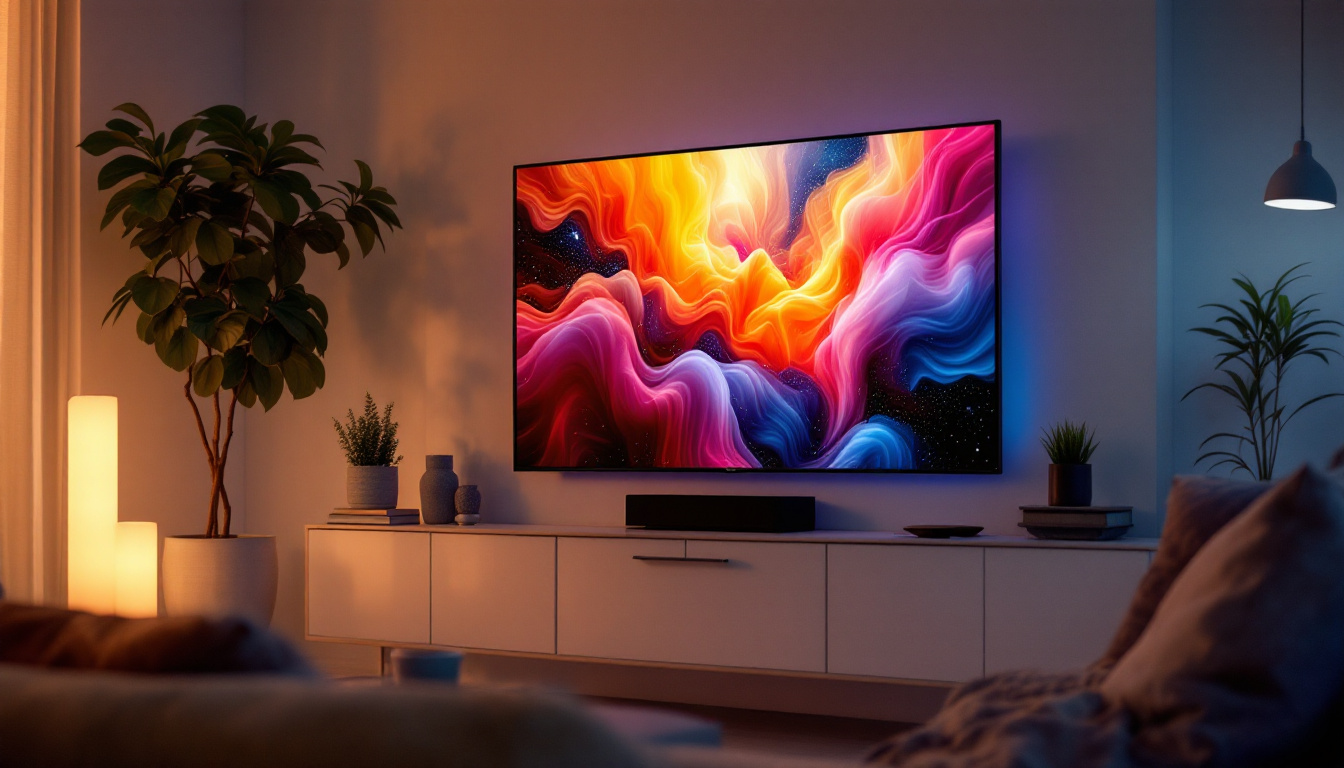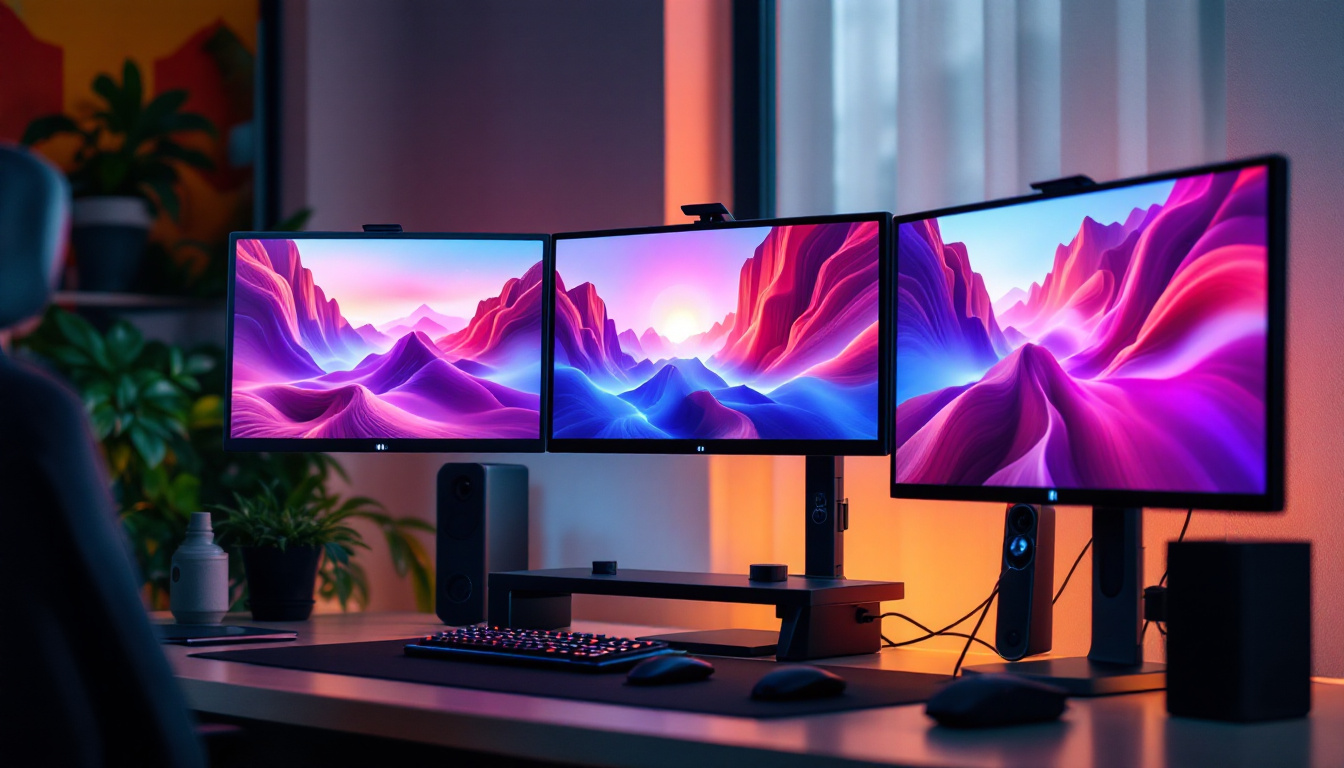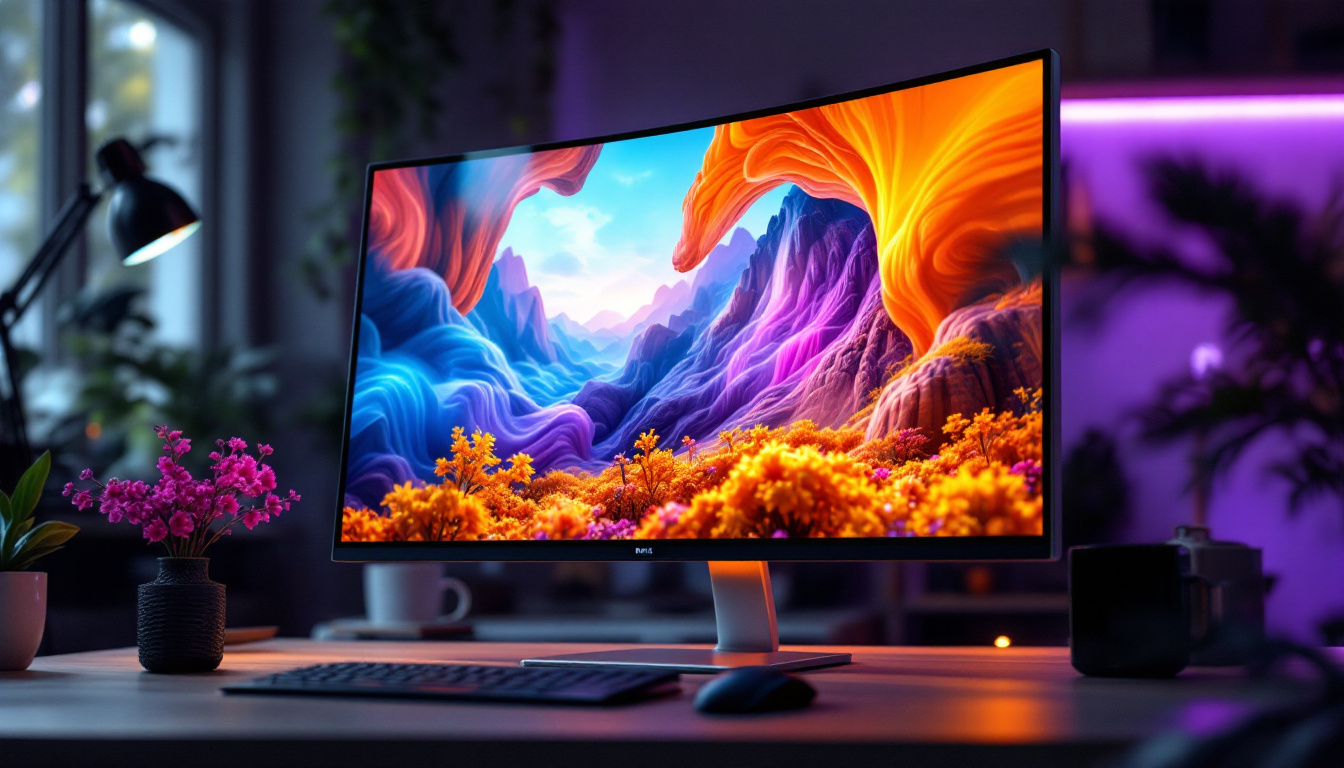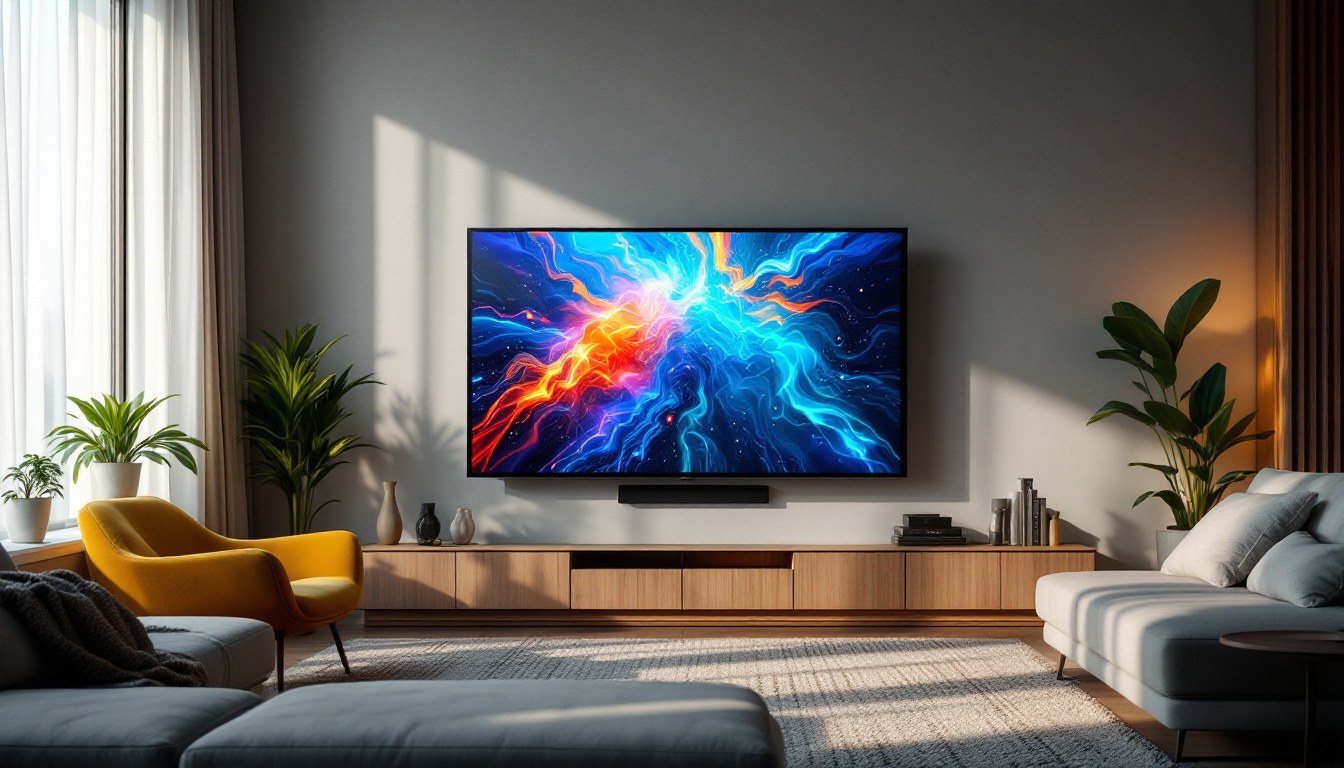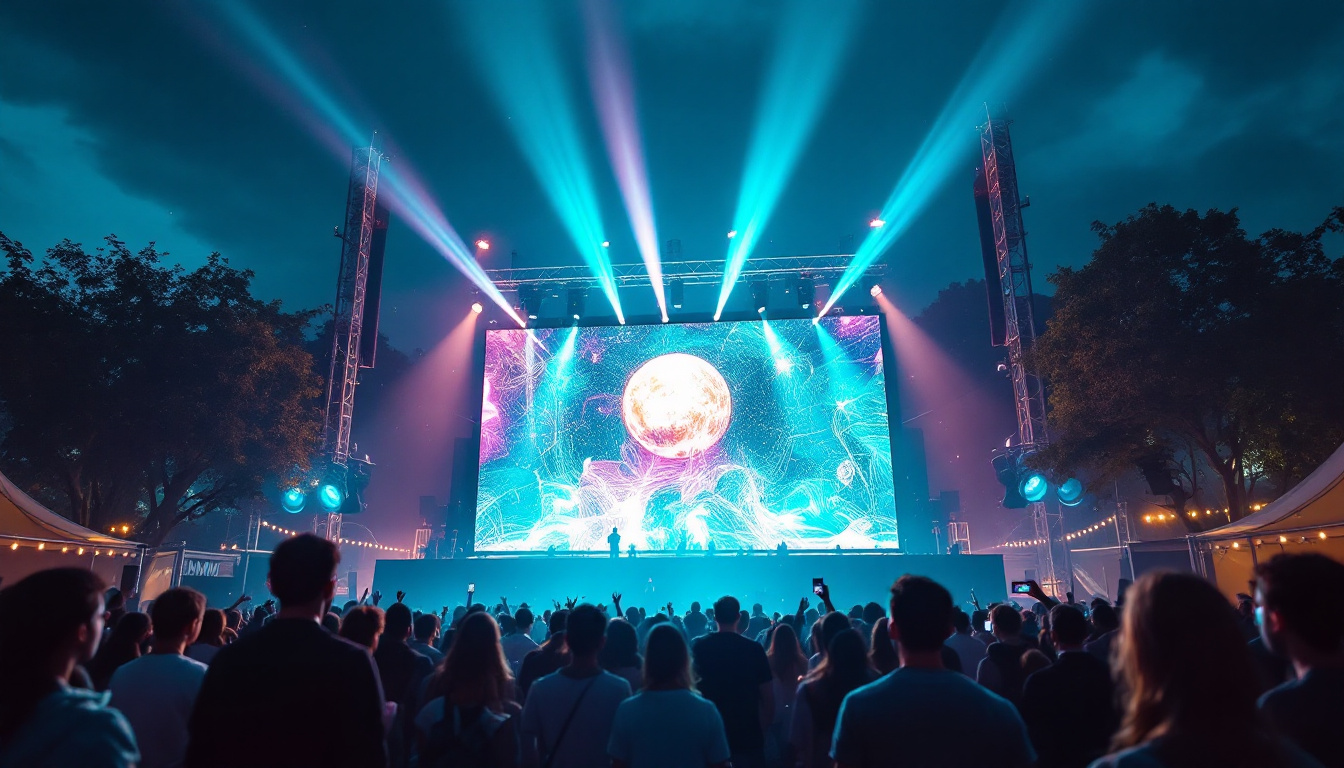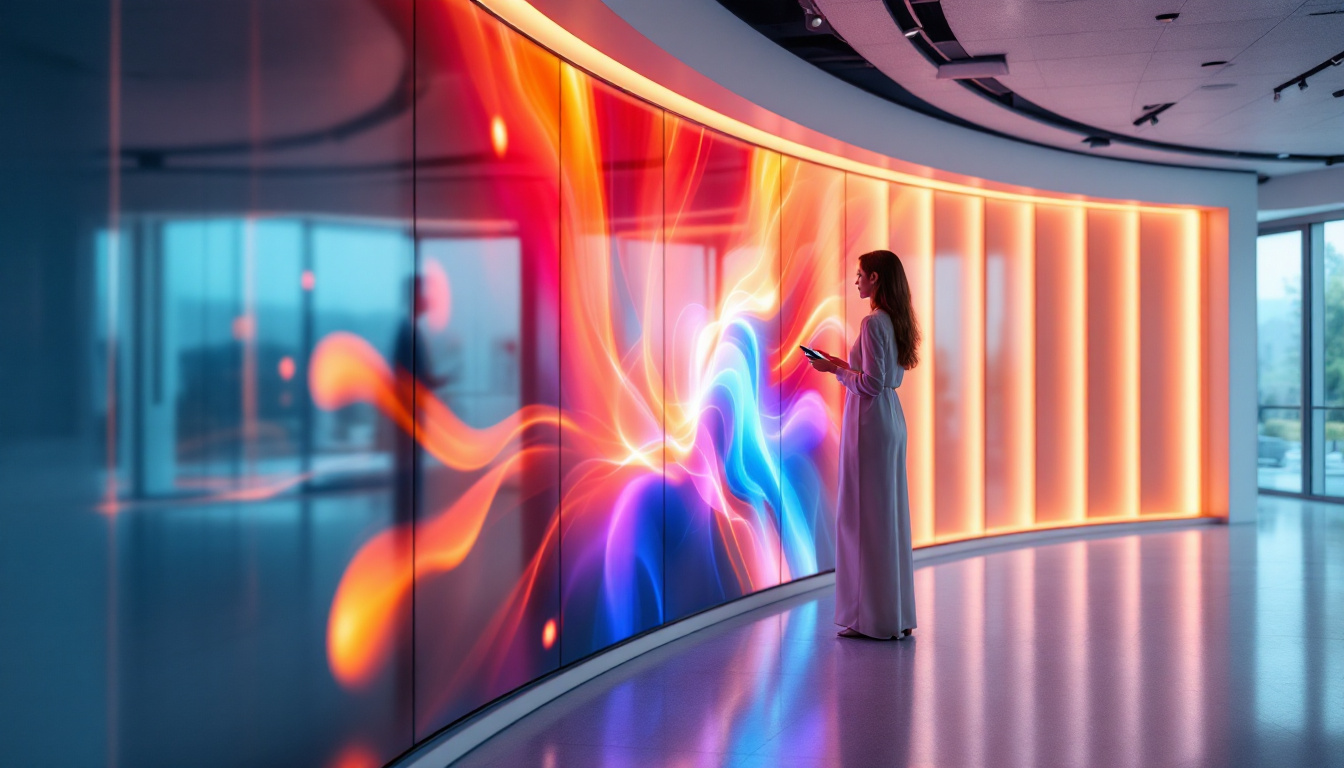Introduction to LED Displays
LED (Light Emitting Diode) displays have revolutionized the way visual information is presented, offering vibrant colors and high energy efficiency. These displays are commonly used in various applications, from televisions and computer monitors to large-scale advertising billboards. Understanding the technology behind LED displays is essential for both consumers and professionals in the field.
This article aims to provide a comprehensive overview of LED displays, including their functionality, types, advantages, and considerations when using them. Whether you’re a tech enthusiast, a business owner, or simply curious about LED technology, this guide will serve as a valuable resource.
At the core of LED display technology is the semiconductor material that emits light when an electric current passes through it. This process not only allows for the creation of bright and colorful images but also contributes to the longevity of the display, as LEDs can last tens of thousands of hours. Additionally, advancements in LED technology have led to the development of various types of displays, such as OLED (Organic LED) and MicroLED, each with its unique benefits and applications. For instance, OLED displays are known for their deep blacks and superior contrast ratios, making them ideal for high-end televisions and smartphones.
Moreover, the versatility of LED displays extends beyond mere aesthetics; they are also highly adaptable to different environments. From outdoor stadium screens that withstand the elements to indoor displays that enhance retail experiences, LED technology can be tailored to meet specific needs. Businesses are increasingly leveraging LED displays for dynamic advertising and information dissemination, utilizing their ability to change content quickly and capture audience attention. This adaptability not only enhances user engagement but also provides a competitive edge in a fast-paced digital landscape.
How LED Displays Work
At the core of LED display technology is the semiconductor material that emits light when an electric current passes through it. This process is known as electroluminescence. LED displays consist of numerous tiny diodes that work together to create images and videos by varying the intensity and color of light emitted. The precision with which these diodes can be controlled allows for stunning visual effects, making LED displays a popular choice for everything from large-scale advertising to intricate art installations.
Components of LED Displays
LED displays are made up of several key components, each playing a crucial role in the overall functionality. The primary components include:
- LED Chips: These are the individual diodes that emit light. They can be combined in various configurations to produce different colors.
- Driver ICs: Integrated circuits that control the brightness and color of the LEDs, ensuring accurate display of images.
- Control System: This system manages the input signals and processes the data to be displayed, allowing for dynamic content changes.
In addition to these core components, LED displays often incorporate heat sinks to dissipate heat generated during operation, ensuring longevity and consistent performance. Furthermore, protective layers are sometimes added to shield the display from environmental factors, particularly in outdoor settings where exposure to sunlight, rain, and dust can significantly impact functionality.
Types of LED Displays
There are several types of LED displays, each designed for specific applications. The most common types include:
- Direct View LED: These displays are made up of individual LEDs that are directly visible to the viewer. They are often used in large outdoor screens and digital billboards.
- LED Backlit LCD: This technology uses LEDs to illuminate an LCD panel from behind, enhancing color accuracy and contrast.
- Organic LED (OLED): A newer technology that uses organic compounds to emit light, allowing for thinner displays and better color reproduction.
Moreover, there are also specialized types of LED displays, such as Transparent LED displays, which allow for visibility through the screen while still displaying vibrant images. These are particularly popular in retail environments where maintaining a view of the products behind the screen is essential. Another innovative type is the Flexible LED display, which can be bent and shaped to fit unconventional surfaces, opening up new possibilities for creative installations and advertising strategies. Each type of LED display serves unique purposes, catering to the diverse needs of modern visual communication.
Advantages of LED Displays
LED displays offer numerous advantages over traditional display technologies, making them a popular choice in various industries. Some of the key benefits include:
Energy Efficiency
One of the most significant advantages of LED displays is their energy efficiency. Compared to traditional incandescent or fluorescent displays, LEDs consume significantly less power while providing brighter images. This not only reduces electricity costs but also minimizes environmental impact. Additionally, the lower energy consumption translates to less heat generation, which can prolong the lifespan of the display and reduce cooling costs in environments where multiple screens are used.
Longevity and Durability
LED displays are known for their long lifespan, often exceeding 50,000 hours of use. This durability makes them ideal for both indoor and outdoor applications, as they can withstand harsh weather conditions and heavy usage without significant degradation in performance. Furthermore, the solid-state nature of LEDs means they are less prone to breakage compared to fragile LCD or plasma screens, making them a reliable choice for high-traffic areas such as airports, shopping malls, and sports arenas.
Vibrant Colors and High Contrast
LED technology allows for a wide color gamut and excellent contrast ratios, resulting in stunning visuals. The ability to produce deep blacks and bright whites enhances the overall viewing experience, making LED displays suitable for everything from home entertainment systems to professional presentations. Moreover, advancements in LED technology, such as HDR (High Dynamic Range), have further improved color accuracy and brightness levels, allowing for more lifelike images that captivate viewers. This makes LED displays particularly appealing for applications in art galleries, museums, and high-end retail environments, where visual impact is paramount.
Flexibility in Design
Another compelling advantage of LED displays is their flexibility in design and installation. Unlike traditional displays that often come in fixed sizes and shapes, LED panels can be manufactured in various configurations, allowing for creative installations that fit unique spaces. This adaptability enables businesses to create eye-catching digital signage that can be tailored to specific marketing needs or architectural designs. Whether it’s a curved screen for an immersive experience or a large video wall for impactful advertising, the possibilities are virtually limitless.
Low Maintenance Requirements
LED displays also require minimal maintenance compared to their counterparts. With fewer components that can fail and a robust design that resists wear and tear, the upkeep of LED technology is straightforward and cost-effective. Many LED displays come with features that allow for easy access to internal components for repairs, further reducing downtime. This reliability is particularly beneficial for businesses that rely on continuous operation, such as broadcast studios or live event venues, where any interruption can lead to significant financial losses.
Considerations When Using LED Displays
While LED displays offer numerous benefits, there are several considerations to keep in mind when selecting and using them. Understanding these factors can help ensure optimal performance and longevity.
Viewing Distance
The resolution and pixel pitch of an LED display are crucial factors that determine the optimal viewing distance. Displays with a lower pixel pitch (closer spacing between pixels) are suitable for closer viewing distances, while those with a higher pixel pitch are better for larger distances. Selecting the right display based on intended use is essential for achieving the best visual experience.
Ambient Light Conditions
LED displays perform well in various lighting conditions, but ambient light can significantly impact visibility. In bright environments, such as outdoor settings, higher brightness levels are necessary to ensure that content remains legible. Conversely, in darker environments, lower brightness settings can enhance the viewing experience while reducing energy consumption.
Maintenance and Care
Proper maintenance is vital for the longevity of LED displays. Regular cleaning and inspection can prevent dust buildup and ensure optimal performance. Additionally, monitoring the display for any signs of malfunction, such as dead pixels or color inconsistencies, can help address issues before they escalate.
Applications of LED Displays
LED displays are widely used across various industries, showcasing their versatility and effectiveness. Some notable applications include:
Advertising and Marketing
In the advertising sector, LED displays have become a powerful tool for capturing consumer attention. Their vibrant colors and dynamic content capabilities make them ideal for billboards, storefronts, and event promotions. Businesses can easily update content in real-time, allowing for targeted marketing strategies.
Entertainment and Events
LED displays are commonly used in concerts, sports events, and festivals to provide high-quality visuals to large audiences. Their ability to display high-resolution images and videos ensures that attendees have an immersive experience, regardless of their location in the venue.
Information and Wayfinding
Many public spaces, such as airports, train stations, and shopping malls, utilize LED displays for information and wayfinding. These displays can provide real-time updates, directions, and important announcements, enhancing the overall experience for visitors.
Future Trends in LED Display Technology
The LED display industry continues to evolve, with advancements in technology paving the way for new possibilities. Some emerging trends include:
MicroLED Technology
MicroLED technology represents a significant leap forward in display technology. By using microscopic LEDs, this technology offers improved resolution, better color accuracy, and enhanced energy efficiency. MicroLED displays are expected to become more prevalent in consumer electronics, such as televisions and smartphones.
Flexible and Transparent Displays
Flexibility in display design is becoming increasingly important, leading to the development of flexible and transparent LED displays. These displays can be integrated into various surfaces, allowing for innovative applications in architecture, advertising, and interior design.
Smart Displays
As the Internet of Things (IoT) continues to grow, smart LED displays are becoming more common. These displays can connect to the internet, allowing for remote content management, real-time data integration, and interactive features. This trend opens up new possibilities for personalized advertising and user engagement.
Conclusion
LED displays have transformed the way visual information is presented, offering numerous advantages over traditional display technologies. Their energy efficiency, longevity, and vibrant colors make them suitable for a wide range of applications, from advertising to entertainment and information dissemination.
As technology continues to advance, the future of LED displays looks promising, with innovations such as MicroLED, flexible designs, and smart capabilities on the horizon. Understanding the intricacies of LED displays can empower consumers and professionals alike to make informed decisions and leverage this technology effectively.
In summary, whether for personal use or professional applications, LED displays represent a dynamic and evolving field that is set to shape the future of visual communication.
Discover LumenMatrix’s Innovative LED Solutions
Ready to experience the future of visual communication with LED displays? LumenMatrix is at the forefront of this transformative technology, offering a wide array of LED display solutions that cater to your unique needs. From Indoor and Outdoor LED Wall Displays to specialized options like Vehicle, Sports, and Floor LED Displays, LumenMatrix has the perfect solution to elevate your brand’s visibility and captivate your audience. Embrace the power of cutting-edge LED technology and make a lasting impression with LumenMatrix’s Custom, All-in-One, and Transparent LED Displays. Don’t miss out on the opportunity to revolutionize your visual engagement—Check out LumenMatrix LED Display Solutions today and step into a world of vivid imagery and dynamic storytelling.

